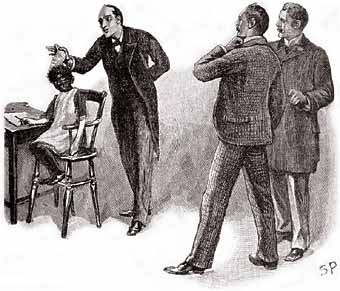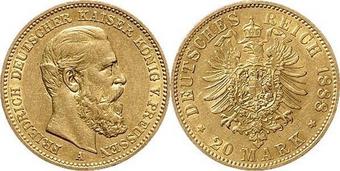A Scion Society of The Baker Street Irregulars

Data! Data! Data! – The Yellow Face
“‘Data! Data! Data!‘ he cried impatiently. ‘I can’t make bricks without clay.’”
– The Adventures of The Copper Beeches (COPP)

This column is composed of material (Data!) developed for a short course called Appreciating Sherlock Holmes that I teach twice a year in the Community Education Life Enrichment Program for a local community college. It is composed of “points of information” that are common to many / most / all of the 60 Canonical stories.
The information here has been researched by me or borrowed / stolen from many efforts of other Sherlockians.
The Yellow Face is near the bottom of the EVERYONE’S favorites list. There is no crime, no brilliant deductions, and no action. It does, however, have some “redeeming features.”
HERE GOES This month’s story The Yellow Face
CHRISTOPHER MORLEY SAID . . .
“Holmes asked to be reminded of this case if he ever showed himself overconfident. Except for the opening deductions based on the visitor’s pipe it is one of the least satisfying of the tales. “
 DUMMIES SHORT SUMMARY (From Sherlock Holmes for Dummies by Steven Doyle & David Crowder)
DUMMIES SHORT SUMMARY (From Sherlock Holmes for Dummies by Steven Doyle & David Crowder)
“Another strange tale with little detection and no crime. And yet, the surprising conclusion pays off.”
PUBLISHING HISTORY
- This is 17th of the 60 stories to be published.
- In England, it was published in the Strand Magazine in February 1893.
- In the U.S., it was published in Harper’s Weekly on February 11, 1893.
- It is part of The Memoirs of Sherlock Holmes collection published by Georges Newnes, London and Harper Brothers, New York in 1894.
- The British Illustrator was Sidney Paget.
HOW MANY WORDS?
According to C. E. Lauderback, 1960 – – found on SHERLOCKIAN.NET website. At 7,540 words YELL has the 22nd most words (#1 is VEIL – 4,499, #56 is NAVL – 12,701)
THE BEST OF SHERLOCK HOLMES (How do Sherlockians rate this story?)
As you can see, pretty near the bottom of the pile everywhere.
- 1927 – Arthur Conan Doyle did not have it on his list of 12 favorites
- 1944 – Baker Street Irregulars voted it #8 on their worst list
- 1959 – Baker Street Irregulars voted it 58th on their list of favorites
- 1999 – Sherlock Holmes Society of London votes it 42nd of the 56 short stories
CLASSIFYING THE CASE (From the Wandering Gipsies of Grimpen Mire of Decatur, Alabama)
This case is one where Holmes comes to the wrong conclusion but his actions cause a happy ending..
CHRONOLOGICALLY SPEAKING
Doyle was often very vague about stating WHEN the tale took place and included few contemporary references to help. Whether this was done intentionally or unthinkingly, the dating of events in the Canon is a very popular pastime pursued by several of our “scholars” researching and justifying their results to no end. We will again default to William Baring-Gould’s dating of Saturday, April 7, 1888. This makes Holmes 34 and Watson 35.
WHAT ELSE HAPPENED IN YEAR 1888?
It is always interesting to see what else in happening at the same time as the stories.
- British East Africa Company founded

- Jack the Ripper has murder spree in Whitechapel.
- Miners Federation of Great Britain formed; demand for minimum wage.
- Foundation of Scottish Labour Party.
- Final report on Commission on Elementary Education Acts in England.
- English Priory of Knights Hospitalers authorized by Royal Charter.
- French Indochina formed.
- Slavery ends in Brazil.
- Emperor Wilhelm I of Germany dies; Frederick III becomes Emperor from March to June, dies, and is succeeded by Wilhelm II.
- Benjamin Harrison elected President of United States; even though Cleveland received more popular votes, the Electoral College gives the election to Harrison.
- Unemployment demonstration in Rome suppressed by the military.
- Agricultural depression causes Sweden to abandon free trade.
- New York State establishes electric chair for method of death penalty.
- Casey at the Bat is recited publicly for the first time.
- John Phillip Sousa composes the military march Semper Fidelis for the U.S. Marine Corp.
- Tchaikovsky performs Symphony No. 5 in E Minor at St. Petersburg.
- Gilbert and Sullivan debut The Yeomen of the Guard.
- Stevenson publishes The Black Arrow, a novel about the War of the Roses.
- Rimsky-Korsakov composes Scheherazade.
- Thomas Hardy publishes Wessex Tales.
- Kipling publishes Soldiers Three, and Plain Tales from the Hills; short stories of India.
- Dunlop’s pneumatic tyre developed, principle still unproven.
- Clinton Merriam establishes the National Geographical Society and they release their first magazine.
- Drinking straws are invented.
- George Eastman perfects the “Kodak” box camera, which uses photographic paper roll-film.
- Fridtjof Nansen, Norwegian explorer, crosses the Greenland ice field. (Seigerson was not with him)
- Nichola Tesla makes first AC motor.
- Incubators are first used for premature infants.
- Institut Pasteur founded.
- Sir J. Dewar and Sir F. Abel invent cordite.
- William Burroughs patents the adding machine.
- Heinrich Hertz produces electromagnetic waves, proves light and heat are both forms of electromagnetic radiation. Sir Oliver Lodge makes same discovery inependently. Hertz used an induction coil; Lodge Leyden jars.
HOLMES AND WATSON – PERSONAL INFO
Holmes and Watson are, again, sharing quarters at 221B.
DRAMATIS PERSONAE
A very small case of characters here. None are really memorable.
- GRANT “JACK” MUNRO, A dealer in hops.
- EFFIE MUNRO, his wife.
- JOHN HEBRON, former husband of Effie. Now deceased.
- LUCY HEBRON, daughter of John and Effie.
- LUCY’S SCOTCH NURSE, who accompanied her from America.
“QUOTABLE SHERLOCK”
Not many quotes here, but the one with “Norbury” adds depth to Holmes’ character
- “Pipes are occasionally of extraordinary interest,” said he. “Nothing has more individuality, save perhaps watches and bootlaces.”
- “Any truth is better than indefinite doubt.”
- “Watson, if it should ever strike you that I am getting a little overconfident in my powers, or giving less pains to a case than it deserves, kindly whisper ‘Norbury” in my ear and I shall be infinitely obliged to you.”
- “I can see that you have not slept for a night or two. That tries a man’s nerves more than work, and more even than pleasure.”
- “If you wish to preserves your incognito, I suggest that you cease to write your name upon lining of your hat, or else you turn the crown towards the person whom you are addressing.”
- “There’s blackmail in it, or I am much mistaken.”
- “There is something very attractive about the livid face at the window.”
HOLMES’ FEE
There is no mention of a fee and we can probably “deduce” that “no harm, no foul” become “no crime, no fee” in this case.
SHERLOCK ON THE BIG SCREEN & THE LITTLE SCREEN
The Yellow Face has only been attempted once. WE don’t need to say why.
- – Yellow Face played by Eille Norwood in the fourth of his 47 movies. The film is in The National Film and Television Archive at the BFI has viewing copies of this film but it has not been released
SHERLOCK HOLMES IN DISGUISE
The Master of disguise used the deception of being disguised 14 times in 11 of the 60 stories, but not in this story.
UNRECORDED CASES (That involved Holmes)
Watson would tease / torture his readers with “I know something you don’t.” Oh my, how Sherlockians love this category. I have in excess of over 150 examples in my collection. Unfortunately neither Watson no Holmes discussed any unrecorded cases in this tale.
IS THERE A DOCTOR IN THE HOUSE?
Victorian London, in Holmes’ time, had approximately 1 doctor for every 100 people. 31 of the 60 tales have a doctor in them. This, of course, does not count Holmes’ Boswell. This listing is by Leslie Klinger in the Winter, 2015 edition of the Baker Street Journal. Whether it was Doyle or Watson, a doctor wrote the story. In this story there was no doctor involved or mentioned.
FAINTING IN THE CANON (courtesy of Sherlockian Karen Murdock)
Fainting is extremely common in the Canon, appearing, in some form, in 37 of the 60 tales. In 21 cases someone actually faints. In 22 cases someone almost faints. And in 5 cases, someone pretends to faint. In this month’s story . . . . Effie Munro almost faints.
HOLMES’S PUBLISHED & PROJECTED WORKS
Sherlockians love this topic and are regularly searching for these items. Holmes mentions published or projected works in 11 of the stories. No reference to “tales untold” to peak our curiosity in this one.
NEWSPAPERS (Real and Fictional)
Though included in only 20 tales some of our more obsessed Sherlockians love this one. No newspapers mentioned in this tale.
ANNOTATED SHERLOCK
The 60 Sherlock Holmes stories used English as spoken in England from the 1880’s until the 1910’s. Some words are foreign to us today and need a “contemporary translation.” There is only one in this month’s story.
- “a brown wide-awake” – a soft broad-brimmed felt hat
WEAPONS (from A Compendium of Canonical Weaponry by Dettman and Bedford)
… “a means by which one contends against another” … utilized in 57 of the 60 tales (all but CREE, 3STU, & YELL) There are several general categories to classify “weapons” that include: firearms, human agents, cutlery, animals, blunt instruments, extortion, toxin, blackmail, and miscellaneous.
OTHER STUFF
From the pen of fellow Sherlockian Don Dillstone we have . . .
Holmes couldn’t tell if it was fear or fury,
‘Cause the face in the window was blurry.
Still, however,
Holmes would remember,
What Watson meant if he whispered “Norbury!”
 Frank Mentzel, aka Merridew of Abominable Memory, had the biggest smile on his face at the last meeting of the Six Napoleons of Baltimore, when his term as Gasogene was over and he swore in his successor.
Frank Mentzel, aka Merridew of Abominable Memory, had the biggest smile on his face at the last meeting of the Six Napoleons of Baltimore, when his term as Gasogene was over and he swore in his successor.

Sorry, comments are closed for this post.